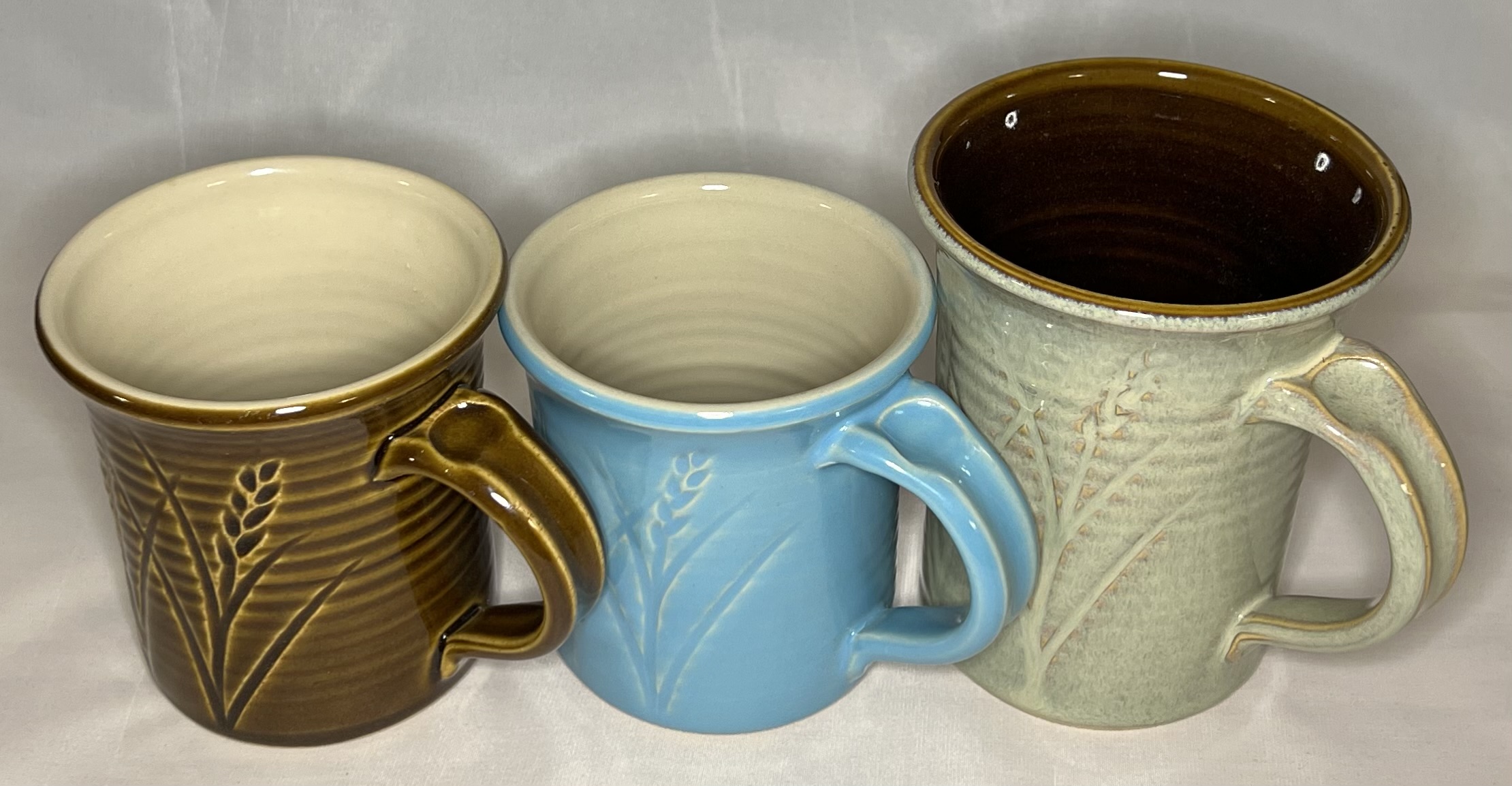| Monthly Tech-Tip | No tracking! No ads! | |
Here is What Processing a Clay Can Do
The clay is Plainsman 3B.
Left: Without processing, other than grinding to 42 mesh (currently the finest we can grind on a practical scale). When fired toward zero porosity it burns like this (at cone 6, 8, 9, 10 and 10R bottom to top). Of course, these are not big issues for non-vitreous rustic bodies fired at cone 6. The speckle and bloating are caused by impurity iron-bearing particles and others having an LOI (they decompose and produce gases that cause the bloats).
Right: The impurity particles make up a small percentage; they can be removed in our lab by sieving to produce a natural porcelain that fully vitrifies by cone 6 (the middle bar). Only about 5% of the material was removed to produce this amazing product (we call it MNP).
Imagine what could be done if we were able to mine raw material further east, where clay quality is much better!
Related Pictures
Mother Nature's porcelain and stoneware

This picture has its own page with more detail, click here to see it.
These are Plainsman PR3B and PR3D. The 3B bars are fired from cone 8 down to 2 (top to bottom) and the 3D ones from cone 9 down to 3. The 3B has added Nepheline to achieve zero porosity below cone 4 (to make an even better MNP). When plus 325 mesh particles are removed from the 3D is becomes quite plastic, suitable as a stoneware by itself (which we call MNS). And it reaches zero porosity around cone 6. 3D is lighter burning and cleaner, 3B is more vitreous and plastic.
I drink from these when I dream

This picture has its own page with more detail, click here to see it.
For many years, I have processed the clay for these myself, from lumps I get from the raw stockpiles behind the Plainsman plant. These are made from our PR3D raw clay mined near Ravenscrag, Sask. It is the bottom layer of six. It has the most potential for pottery because it is low in contaminants, fine-grained, light-burning and vitrifies well below cone 10. When I remove all particles coarser than 200 mesh (by slurry up and vibratory sieving) this becomes MNS (mother nature's stoneware) all by itself. Left: 200 mesh. Right 325 mesh. Centre: 150 mesh with added ball clay and feldspar to produce porcelain.
My coffee tastes better in these because they symbolize the potential of even our current quarry (as opposed to our importing tens of thousands of bags of American clays each year). This is what I dream about. Processing our products past 42 mesh to get porcelain-like bodies. The finer particle size doesn't just unlock plasticity, but it eliminates problems that plague customers: glaze pinholing, fired specks, coarse particles and sand, even inconsistency and poor drying. Couple that with moving to a deposit further east and we reduce soluble salts and get whiter clays. I even dream that we won't leave this clay in the ground, unmined, like we have done for the past three minings! Even that we will make these glazes. And I dream that someone on our board is paying attention to these posts I have been making for the past 18 months! Is the future under our feet or in Tennessee and Georgia?
Videos
Links
| Projects |
Make your own sieve shaker to process ceramic slurries
All you need is an inexpensive vibration motor from Amazon, a five-gallon pail, some metal and welding and 3D-printed collars to hold the sieve in place. |
| Glossary |
42 mesh
|
Got a Question?
Buy me a coffee and we can talk

https://digitalfire.com, All Rights Reserved
Privacy Policy

